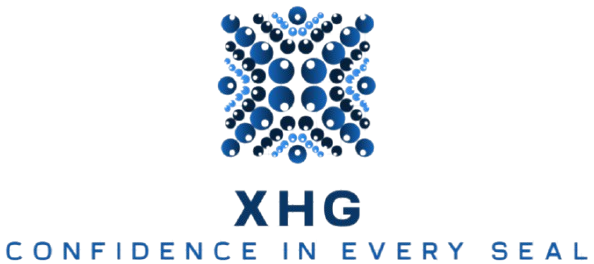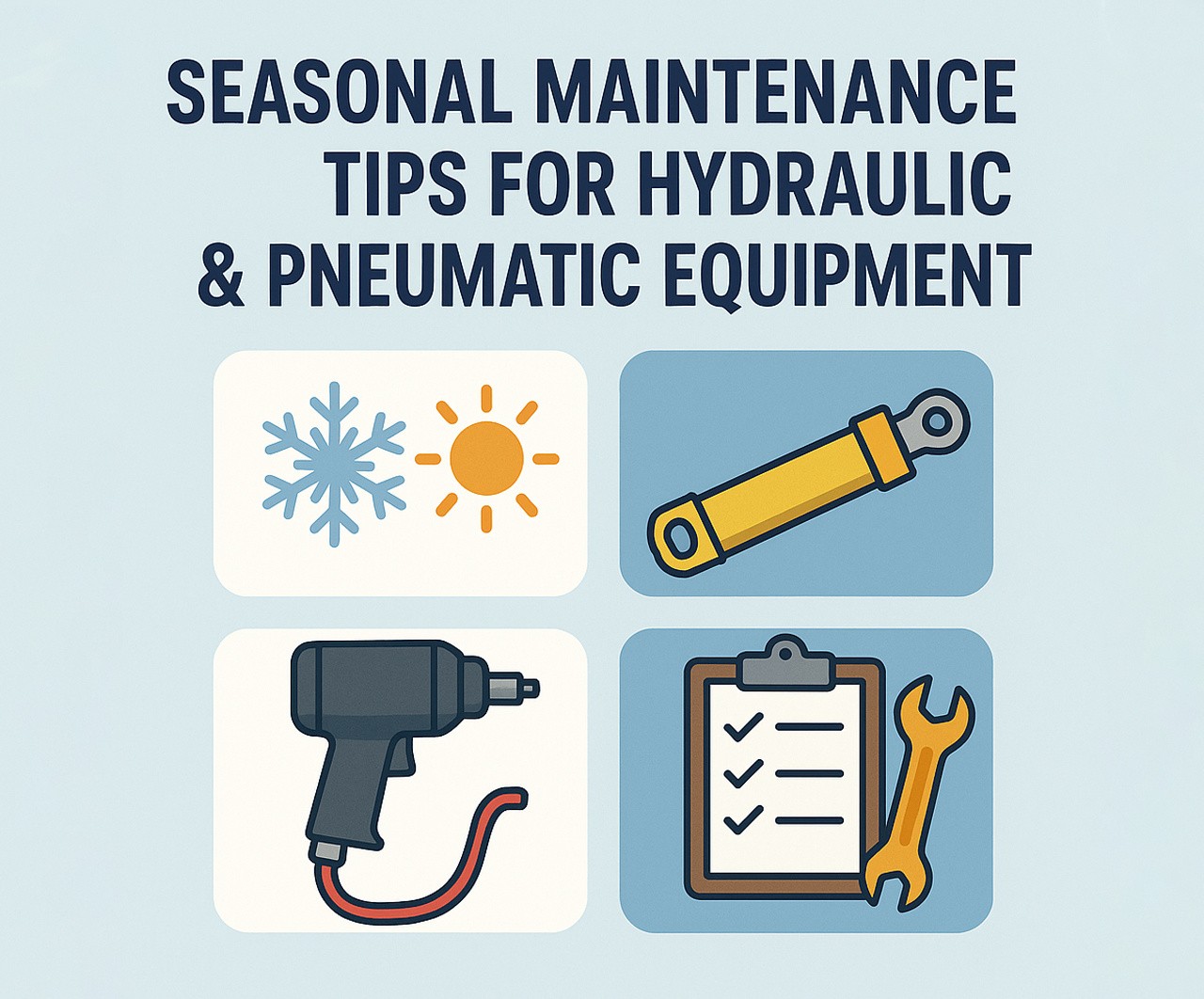Whether you operate in blistering summer heat or freezing winter conditions, maintaining your hydraulic and pneumatic equipment year-round is critical. Components like seal hydraulic pump, pneumatic seals, and pneumatic cylinder seals are especially vulnerable to seasonal fluctuations. Ignoring these changes can lead to leaks, pressure loss, and expensive downtime. This guide provides practical, innovative maintenance tips to prepare your machinery for every season and ensure top performance, regardless of the climate. Know more..
Understanding Seasonal Impact on Seals and Systems
Temperature swings, humidity, and environmental contaminants can significantly affect hydraulic and pneumatic systems. Materials used in seal hydraulic pump components may expand or contract, while pneumatic seals can become brittle or lose flexibility. Similarly, pneumatic cylinder seals might degrade faster under certain conditions, especially in outdoor or mobile applications.
Seasonal maintenance isn’t just about damage control—it’s about adapting your system proactively to avoid stress on components and maximize efficiency.
Spring Maintenance: System Wake-Up Call
As machinery comes back into full swing after winter downtime or reduced use, spring is the time for deep inspection and recalibration.
Checklist for Spring:
- Inspect all pneumatic seals for cracks or wear caused by cold temperatures.
- Test your seal hydraulic pump for leaks, especially around joints and fittings.
- Flush and replace hydraulic fluids that may have thickened over winter.
- Check pneumatic cylinder seals for flexibility and responsiveness.
- Lubricate moving components with climate-appropriate grease.
Bonus Tip: Spring is also ideal for testing air compressors and checking for water buildup in pneumatic lines. Moisture damage to pneumatic seals is more common than most operators think.
Summer Maintenance: Heat-Proofing Your System
High temperatures can degrade fluids and soften seal materials. Excessive heat causes seal hydraulic pump components to swell, while pneumatic seals may deform under prolonged exposure to sunlight or thermal expansion.
Checklist for Summer:
- Use high-temperature rated pneumatic seals and hydraulic seal materials.
- Monitor system pressure and watch for fluid leaks or pressure drops.
- Upgrade to UV-resistant pneumatic cylinder seals if equipment is outdoors.
- Ensure cooling systems and fluid reservoirs are clean and functioning.
- Schedule mid-season inspections for heavily-used systems.
Pro Tip: Store spare seal hydraulic pump components in climate-controlled areas. Heat can compromise unused parts before they’re even installed.
Autumn Maintenance: Prepping for the Cold
As temperatures begin to drop, your system needs to prepare for colder viscosities and contracting materials. Flexible pneumatic seals become more rigid, and minor issues in your seal hydraulic pump could turn into major failures.
Checklist for Autumn:
- Switch to low-temperature hydraulic fluids to reduce startup strain.
- Check housing tolerance levels for pneumatic cylinder seals that may shrink.
- Replace any worn pneumatic seals that could harden in the cold.
- Examine and insulate exposed fluid lines.
- Test heater elements or pre-warming features if installed.
Did You Know? Seasonal shifts in air pressure also affect pneumatic seals by changing system dynamics. Recalibrating sensors in the fall ensures optimal air/fuel mix and valve timing.
Winter Maintenance: Cold-Weather Survival
Winter is harshest on hydraulic and pneumatic systems. Fluids thicken, seals become brittle, and moisture can freeze, causing micro-cracks in components. A well-maintained seal hydraulic pump and resilient pneumatic cylinder seals are essential for smooth operation.
Checklist for Winter:
- Perform cold start tests on systems weekly.
- Add anti-freeze agents to hydraulic reservoirs where applicable.
- Check all pneumatic seals for brittleness.
- Protect seal hydraulic pump components from snow, salt, and ice.
- Use synthetic lubricants that maintain viscosity in sub-zero temps.
Important Note: Freezing condensation in air lines can rapidly destroy pneumatic cylinder seals. Always drain moisture traps and dry lines regularly.
Year-Round Seal Best Practices
Regardless of the season, certain maintenance practices ensure your seals last longer and perform better.
1. Match Seals to Environmental Conditions
Not all seals are created equal. Choose seal hydraulic pump parts that match your climate and operational temperature. EPDM, Viton, and HNBR all behave differently under thermal stress.
2. Use Season-Optimized Lubricants
Standard oils lose their properties outside normal ranges. Pair your pneumatic seals with lubricants that flow well in your specific climate.
3. Upgrade to Smart Monitoring
Install pressure and temperature sensors that alert you when your pneumatic cylinder seals are operating outside safe parameters. Predictive maintenance saves money.
4. Store Spares Properly
Seal degradation doesn’t just happen during operation. Improper storage of seal hydraulic pump parts can lead to premature failure. Keep seals in a clean, cool, and dry place.
Troubleshooting Common Seal Failures by Season
| Season | Symptom | Likely Cause | Recommended Fix |
| Spring | Slow movement | Hardened pneumatic seals | Replace with fresh seals, test pressure |
| Summer | Fluid leakage | Swollen seal hydraulic pump O-rings | Use high-temp materials |
| Autumn | Vibration or noise | Shrinking pneumatic cylinder seals | Check housing dimensions, replace seals |
| Winter | System won’t start | Frozen lines or brittle pneumatic seals | Drain lines, use synthetic lubes |
Innovative Maintenance Ideas
1. Seal Rotation Schedules
Just like rotating tires, consider rotating your most critical pneumatic cylinder seals and seal hydraulic pump kits during mid-season. This allows you to spot fatigue and reduce sudden failures.
2. Onboard Microheaters
Add small heating elements near pneumatic seals or reservoir tanks in cold regions. This stabilizes material properties during early startup.
3. Climate-Based Seal Kits
Stock different pneumatic seals based on the expected temperature range for each quarter. Quick swaps ensure minimal downtime during weather transitions.
Environmental Factors to Consider
- Humidity: Can cause corrosion on shafts, wearing down pneumatic seals faster.
- Dust/Contaminants: Dry summer air increases dust; consider adding wiper seals.
- Rainfall/Snow: Protect seal hydraulic pump units with enclosures or hoods.
- UV Exposure: Outdoor systems need UV-stabilized pneumatic cylinder seals.
Maintenance Tools Worth Investing In
- Infrared Thermometers: Monitor seal and fluid temperature.
- Digital Pressure Gauges: Check real-time system efficiency.
- Bore Scopes: Inspect internal seal hydraulic pump elements.
- Seal Extraction Tools: Remove and replace pneumatic seals cleanly.
The ROI of Seasonal Seal Maintenance
A proactive seasonal maintenance program may seem like extra work, but it pays off fast. Here’s what you can expect:
- 40% longer seal life
- 30% fewer breakdowns
- 25% less fluid waste
- 50% less downtime during seasonal changeovers
By prioritizing your pneumatic cylinder seals and seal hydraulic pump units now, you invest in a smoother, more efficient future.
Final Thoughts
Seasons change, and so should your maintenance strategy. From spring thaw to winter freeze, your equipment’s performance hinges on the health of key components like seal hydraulic pump, pneumatic seals, and pneumatic cylinder seals. A smart, seasonal approach minimizes failure risk, boosts uptime, and extends the life of your most valuable assets.
Don’t wait until your equipment breaks. Make seasonal seal maintenance a core part of your strategy—and keep your operations running smoothly all year round.


